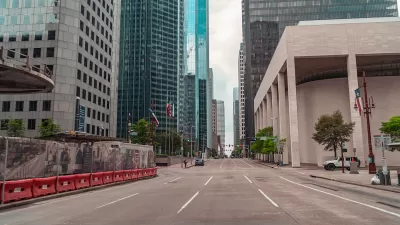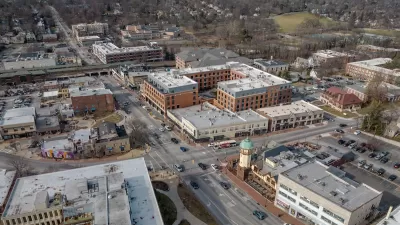An emerging field of ‘neuroarchitectural’ research is revealing how building facades and urban design impact the human brain and body.

The impact of urban design and architecture on the human psyche has been discussed by writers for decades, and, according to a piece by Thomas Heatherwick in Wired, planners and architects are starting to take note.
From the second half of the 20th century, pioneering thinkers such as American author and activist Jane Jacobs and Danish architect Jan Gehl began highlighting the inhuman way our cities were being shaped, with boring constructions, barren spaces and brutal expressways.
According to Heatherwick, planners and builders were long inconvenienced by the truths told by activists such as Jane Jacobs and Jan Gehl. “But the recent availability of sophisticated new brain-mapping and behavioral study techniques, such as using wearable devices that measure our body’s response to our surroundings, means it is getting much harder for the construction industry echo chamber to keep ignoring the responses of millions of people to the places it has created.”
Heatherwick explains how the study of “neuroarchitecture” has been growing around the world, with researchers understanding more about how the built environment affects how humans feel when navigating and existing in it. “Very soon, I believe, property developers may have to treat neuroscientific findings as key information to be weighed up alongside structural-load calculations, energy efficiency, lighting, and acoustics. And the person in the street will welcome this change.”
FULL STORY: It's Official: Boring Cities Are Bad for Your Health

Planetizen Federal Action Tracker
A weekly monitor of how Trump’s orders and actions are impacting planners and planning in America.

The Simple Legislative Tool Transforming Vacant Downtowns
In California, Michigan and Georgia, an easy win is bringing dollars — and delight — back to city centers.

San Francisco's School District Spent $105M To Build Affordable Housing for Teachers — And That's Just the Beginning
SFUSD joins a growing list of school districts using their land holdings to address housing affordability challenges faced by their own employees.

In More Metros Than You’d Think, Suburbs are Now More Expensive Than the City
If you're moving to the burbs to save on square footage, data shows you should think again.

The States Losing Rural Delivery Rooms at an Alarming Pace
In some states, as few as 9% of rural hospitals still deliver babies. As a result, rising pre-term births, no adequate pre-term care and "harrowing" close calls are a growing reality.

The Small South Asian Republic Going all in on EVs
Thanks to one simple policy change less than five years ago, 65% of new cars in this Himalayan country are now electric.
Urban Design for Planners 1: Software Tools
This six-course series explores essential urban design concepts using open source software and equips planners with the tools they need to participate fully in the urban design process.
Planning for Universal Design
Learn the tools for implementing Universal Design in planning regulations.
Smith Gee Studio
City of Charlotte
City of Camden Redevelopment Agency
City of Astoria
Transportation Research & Education Center (TREC) at Portland State University
US High Speed Rail Association
City of Camden Redevelopment Agency
Municipality of Princeton (NJ)





























